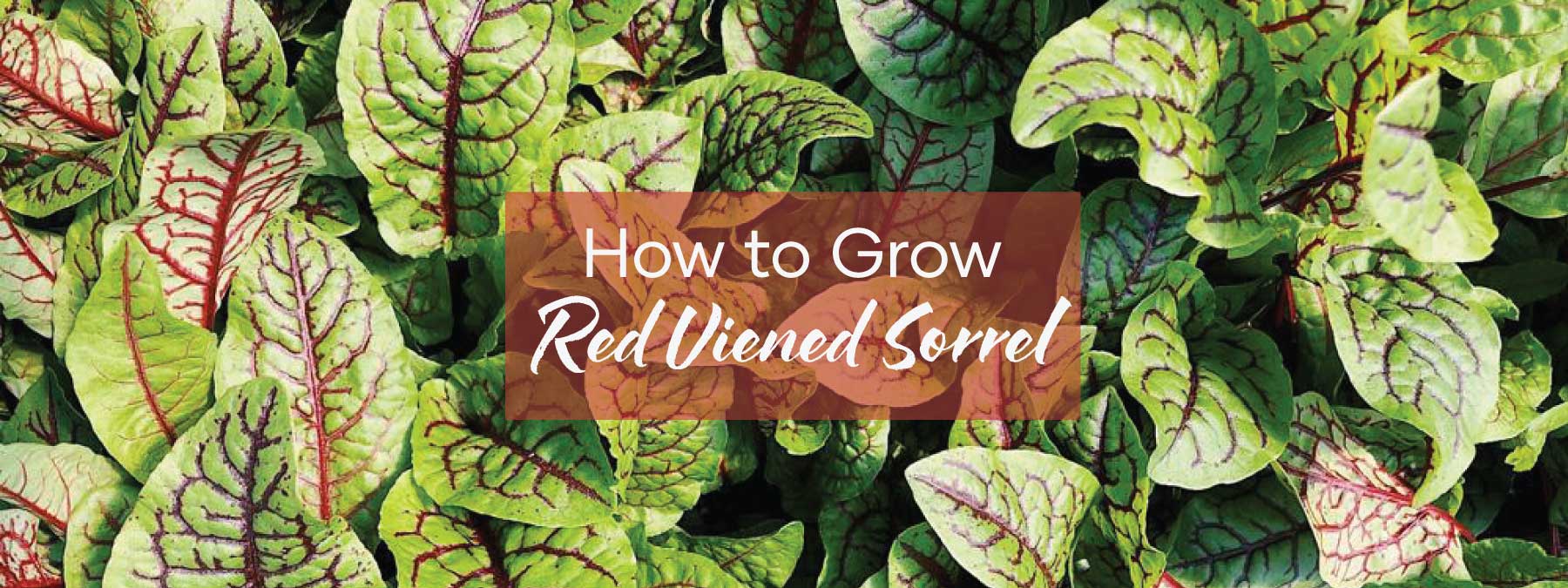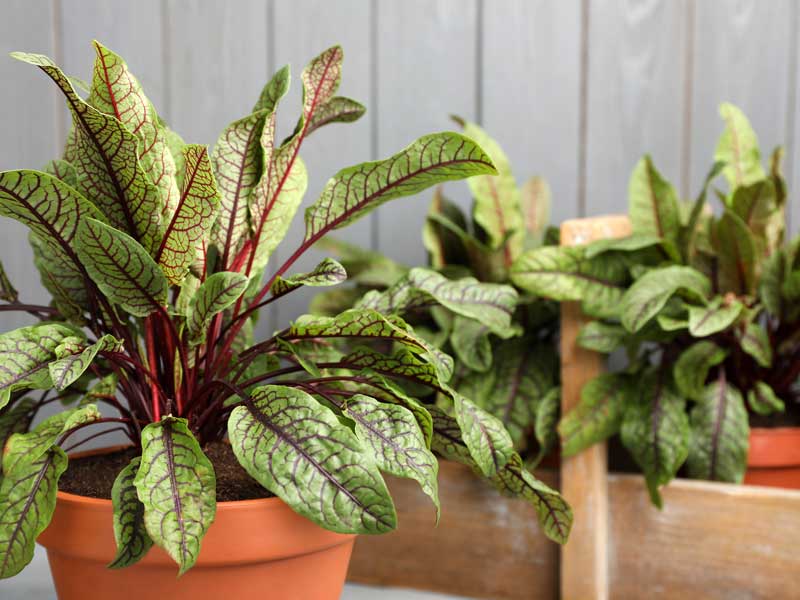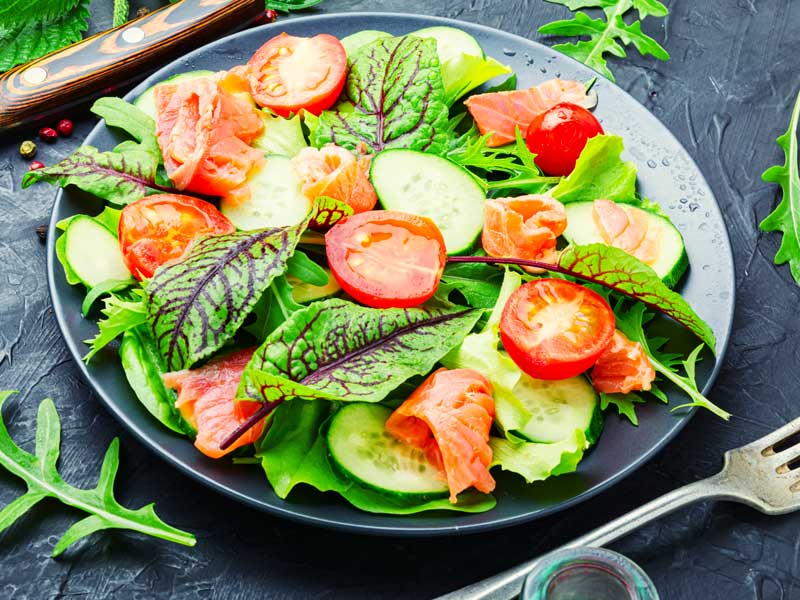
Red veined sorrel (Rumex sanguineus), also called bloody sorrel, is a leafy herb known for its bright green leaves and deep red veins. It belongs to the buckwheat family and is grown both as a microgreen and a mature leafy green. The young leaves have a lemony, tangy flavour and are packed with antioxidants, vitamins, and minerals. This guide covers everything you need to grow red veined sorrel successfully in Australian gardens, including microgreen and mature plant methods, pest and disease management, and harvesting tips.
Growing Red Veined Sorrel as Microgreens
What You’ll Need
- Growing trays (with and without drainage holes) or a few small pots
- 3–5 grams of red veined sorrel seeds
- Organic potting mix or seed-raising mix
- Vermiculite (optional)
- Spray bottle for misting
- Liquid fertiliser
Best Conditions for Microgreens
- Daytime temperature: 18–20°C
- Keep humidity low — ensure air flow with a fan or open window
- Sunlight: 6–8 hours per day or grow lights
Step-by-Step Instructions
- Fill trays or pots with organic potting mix.
- Sow seeds evenly on top or 2 cm apart for spaced planting.
- Lightly cover seeds with a thin layer of vermiculite.
- Mist the surface gently with water.
- Place in full sun or a well-lit spot until germination (5–7 days).
- Once sprouted, move indoors to a bright windowsill or greenhouse.
- Keep misting daily. Feed with diluted liquid fertiliser every 7–10 days.
- Harvest when leaves are 5–10 cm tall (around 14–21 days).
Common Issues with Microgreens
- Too much humidity: Causes mould. Use airflow and don’t overwater.
- Uneven growth: Make sure seeds are spread evenly and trays get full light.
Growing Red Veined Sorrel to Maturity
Red veined sorrel grows well in most parts of Australia, including temperate and cool zones. It’s a short-lived perennial but is usually grown as an annual leafy green. You can grow it in garden beds or large pots (30 cm or larger).
Soil & Sun Requirements
- Soil pH: 5.5–6.8
- Soil type: Well-drained and rich in organic matter
- Sunlight: Full sun or part shade
When to Sow Red Veined Sorrel in Your Climate
| Climate Zone | Best Sowing Time | Tips |
|---|---|---|
| Temperate | Late winter to early spring (August–October) | Sow directly after frost risk has passed. Protect seedlings in early spring with row cover if needed. |
| Cool | Spring (September–November) | Sow in full sun and well-drained soil. May need protection from late frosts. |
| Subtropical | Autumn to early spring (March–August) | Avoid summer heat. Provide part shade in warmer months for better leaf quality. |
| Tropical | Late autumn to winter (April–July) | Grow during the cooler dry season. Avoid wet season due to fungal risk. |
| Arid | Autumn and spring | Provide afternoon shade and regular water. Mulch to retain moisture. |
How to Grow in the Garden
- Choose a full sun spot and enrich the soil with aged compost.
- Sow seeds 12 mm deep and 5 cm apart, directly into the soil.
- Keep soil evenly moist during germination (7–14 days).
- Once seedlings are 6–8 weeks old, thin to 30–50 cm apart.
- Feed with compost or organic fertiliser mid-season.
- Harvest leaves when they are 10–12 cm tall (about 60 days).
How to Grow in Pots

- Use a 30 cm+ pot with drainage holes.
- Fill with premium potting mix and compost.
- Water regularly, but don’t let the soil stay soggy.
- Place in a sunny spot and rotate the pot weekly for even growth.
Harvesting Tips
- Pick outer leaves regularly to encourage new growth.
- Harvest in the morning for best flavour.
- Leaves become tough and bitter as the plant ages or bolts.
- Remove flowers to keep the plant producing leaves longer.
Pests, Insects & Diseases
Common Pests
- Aphids: Remove with a hose or squish by hand. Spray neem oil if needed.
- Slugs and snails: Use barriers, beer traps, or collect by hand at night.
Diseases
- Downy mildew: Avoid overhead watering and increase airflow.
- Leaf spot: Remove affected leaves and avoid crowded planting.
Preventative Tips
- Water at the base of the plant, not the leaves.
- Space plants well to reduce humidity.
- Rotate crops yearly if growing in the same soil.
How to Use Red Veined Sorrel

- Microgreens: Use fresh in salads, wraps, or as a garnish.
- Mature leaves: Cook in soups, stews, or mix into pasta dishes.
- Always cook older leaves — raw leaves can be too tangy or bitter.
Garden Companion Tip:
Red veined sorrel grows well near strawberries. Avoid planting it too close to plants that attract aphids.
Final Tips for Success
- Divide established plants every 3–4 years to refresh growth.
- Use mulch around the base to retain soil moisture and suppress weeds.
- If you don’t want sorrel to self-seed, remove flower stalks early.
Red veined sorrel is a great herb for both kitchen and garden. With regular care and a sunny spot, you’ll enjoy its colour and flavour for many weeks.
Shop Now for Red Veined Sorrel Seeds. Available in Home Garden & Bulk Commercial Pack Sizes.
